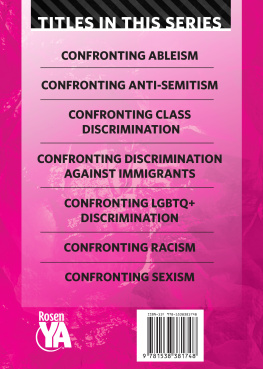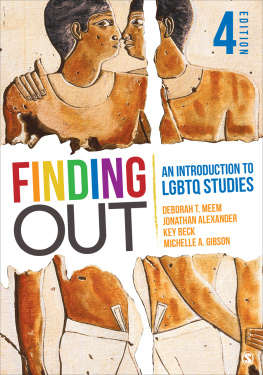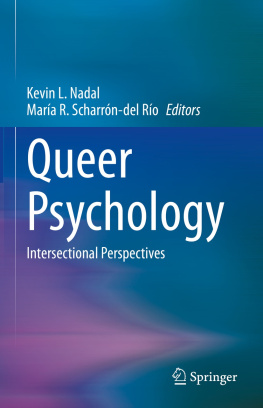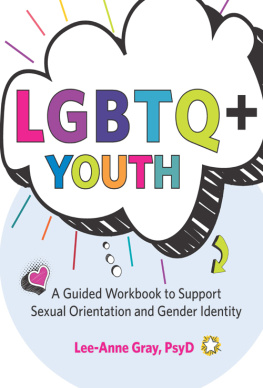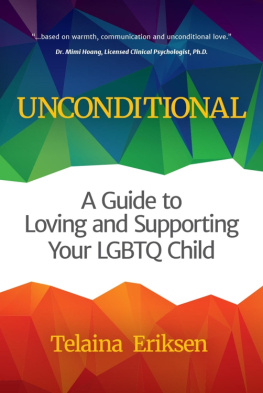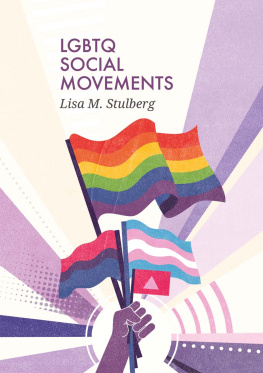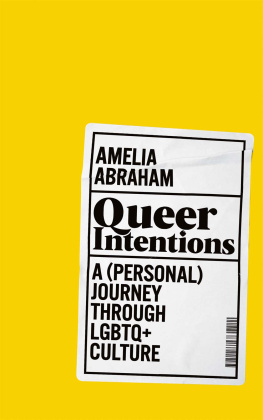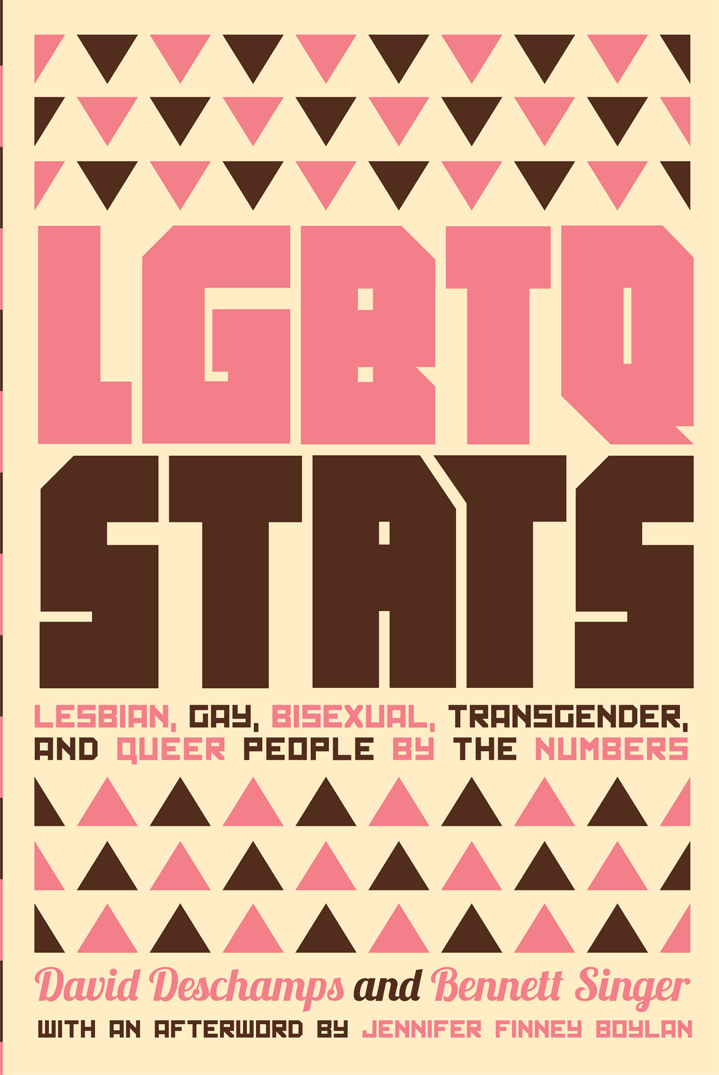David Deschamps and Bennett Singer edited Gay & Lesbian Statsthe acclaimed first edition of this bookand, with Leslie D. Farrell, co-directed the award-winning PBS documentary Electoral Dysfunction, hosted by Mo Rocca, as well as four short videos on voting in America for the New York Times Op-Docs series. Deschamps has served as a researcher for numerous books, including John Nicholss Jews for Buchanan and William Martins With God on Our Side: The Rise of the Religious Right in America.
Bennett Singer edited the books Growing Up Gay/Growing Up Lesbian (a Lambda Literary Award finalist) and 42 UP (companion volume to Michael Apteds documentary series) and, with Nancy Kates, co-directed the film Brother Outsider: The Life of Bayard Rustin, which was broadcast nationally on PBS and Logo and won more than twenty international prizes, including the GLAAD Media Award. He is the former executive editor of Time magazines education program. Singer and Deschamps are currently developing a television series on the history of same-sex love. They are married and live in Brooklyn.
Jennifer Finney Boylan is a writer, activist, and professor whose 2003 memoir, Shes Not There: A Life in Two Genders, was the first bestselling work by a transgender American. She serves as national co-chair of the Board of Directors of GLAAD and on the Board of Trustees of the Kinsey Institute for Research in Sex, Gender, and Reproduction.
www.lgbtqstats.org

2017 by David Deschamps and Bennett Singer
All rights reserved.
No part of this book may be reproduced, in any form, without written permission from the publisher.
Requests for permission to reproduce selections from this book should be mailed to:
Permissions Department, The New Press, 120 Wall Street, 31st floor, New York, NY 10005.
Published in the United States by The New Press, New York, 2017
Distributed by Perseus Distribution
ISBN 978-1-62097-245-8 (e-book)
CIP data is available.
The New Press publishes books that promote and enrich public discussion and understanding of the issues vital to our democracy and to a more equitable world. These books are made possible by the enthusiasm of our readers; the support of a committed group of donors, large and small; the collaboration of our many partners in the independent media and the not-for-profit sector; booksellers, who often hand-sell New Press books; librarians; and above all by our authors.
www.thenewpress.com
Book design and composition by Bookbright Media
This book was set in Avenir and Jockey
Printed in the United States of America
10 9 8 7 6 5 4 3 2 1
We dedicate this book to the millions of people around the globe who have had the courage to come out. While their exact numbers are unknown, it is indisputable that their openness and honesty have sparked a revolution.
Table of Contents
Guide
CONTENTS
We are perhaps in greater need of sound, factual information about ourselves than any other group of people in our society.... It is important to us to document the truth because we have paid such a heavy price for dishonestynot only the lies of those who wish us ill, but also the fear that still compels so many of our sisters and brothers to lead lives of deception and concealment.
Congressman Gerry Studds, the first openly gay member of the U.S. House of Representatives, in the introduction to Gay & Lesbian Stats: A Pocket Guide of Facts and Figures, 1994
B ack in 1993, when we set out to create the first edition of this book, finding statistics on lesbian, gay, and bisexual Americans was a daunting task. We spent months at various libraries poring through journals and databases and managed to produce an 80-page almanac that included a four-page chapter on family and relationships and a three-page chapter on public opinion. We noted that as of 1993, no president had ever appointed an openly lesbian or gay person to any of the nations 1,000 federal judgeships; that 25 jurisdictions in the United States recognized some sort of domestic partnership for lesbians and gay men; and that 51 percent of college freshmen believed lesbians and gay men should try to be heterosexual.
Nearly 25 years later, creating the new edition of this book presented a different challenge: the explosion of information on lesbian, gay, bisexual, transgender, and queer issues meant that we had literally thousands of sources from which to draw data. Using statistics from government agencies (including the U.S. Census Bureau, the U.S. Department of Justice, and the Centers for Disease Control and Prevention), nonprofit organizations, think tanks, academic journals, and polls and surveys, we have sought to document the unprecedented social, legal, and cultural changes that have occurred over the past two decades. We have addressed a number of topicsincluding the rights of, and discrimination against, transgender Americans and milestones on the road to the Supreme Courts landmark 2015 decision on marriage equalitythat were not covered in the books first edition.
The statistics in this collection were current as of the summer of 2016. As such, this book represents a snapshot of an evolving community at a specific moment in time. Wherever possible, we have made an effort to situate facts and figures in historical context and to juxtapose the experiences of LGBTQ people with those of their straight peers. We hope that the portrait presented in this book provides an enlighteningand empoweringlook at LGBTQ Americans on their ongoing quest for liberation, equality, and first-class citizenship.
David Deschamps and Bennett Singer
September 2016
Brooklyn, New York
T his book owes its existence to the researchers, pollsters, statisticians, economists, legal advocates, historians, journalists, authors, and activists whose surveys, studies, polls, reports, articles, monographs, and books are cited on the following pages. We are especially indebted to the Williams Institute for its groundbreaking research on an array of topics addressed throughout this compendium.
For reading and commenting on portions of the manuscript, or for contributing material for inclusion in the book, we extend our appreciation to Leslie Gabel-Brett, Tobin Grant, Loraine Hutchins, Joy Ladin, Abbe Land, Steve Mendelsohn, Shauna Shames, Maggie Wenig, and Clyde Wilcox. Thanks, too, to the following friends, family members, and colleagues who offered advice and support: Rosie Bruno, Elise Deschamps, Lawrence Eaton, Preston Fitzgerald, Rob Fox, Philip and Victorio Gallo, Kevin Jennings, David Kraiker, Lisa Linsky, Andra Miletta, Walter Naegle, Alison Oliver, Ellen Reeves, Jonathan Rosenbloom, Patrick Sammon, Paul and Chris Singer, Cedric Smith, Rachel Smith, Rachel and Jerry Sullivan, Robert Taylor, Lynne Tennenbaum, and Tristram Wyatt.
We appreciate the wise advice and unflagging good humor of our editor at The New Press, Julie Enszer, as well as the research that her students conducted for this project. We are also grateful to Emily Albarillo, the books production editor, for her extraordinary dedication and meticulous attention to detail; to Sarah Scheffel for her skillful copyediting; to Jen Weers for her masterful indexing; to Cinque Hicks and his colleagues at Bookbright Media for designing the book with flair; and to New Press staffers Jed Bickman, Maury Botton, Julie McCarroll, Bev Rivero, and Ben Woodward for their insights and assistance. And finally, we would like to convey our deep gratitude to Diane Wachtell for commissioning the first edition of this book back in 1993 and for encouraging us to create this revised edition. Dianes visionary leadership is an inspiration to us, and we are honored to contribute to the growing collection of LGBTQ titles published by The New Press.


